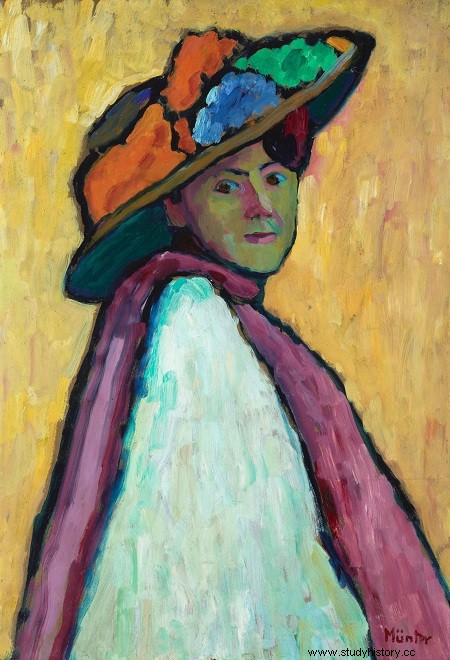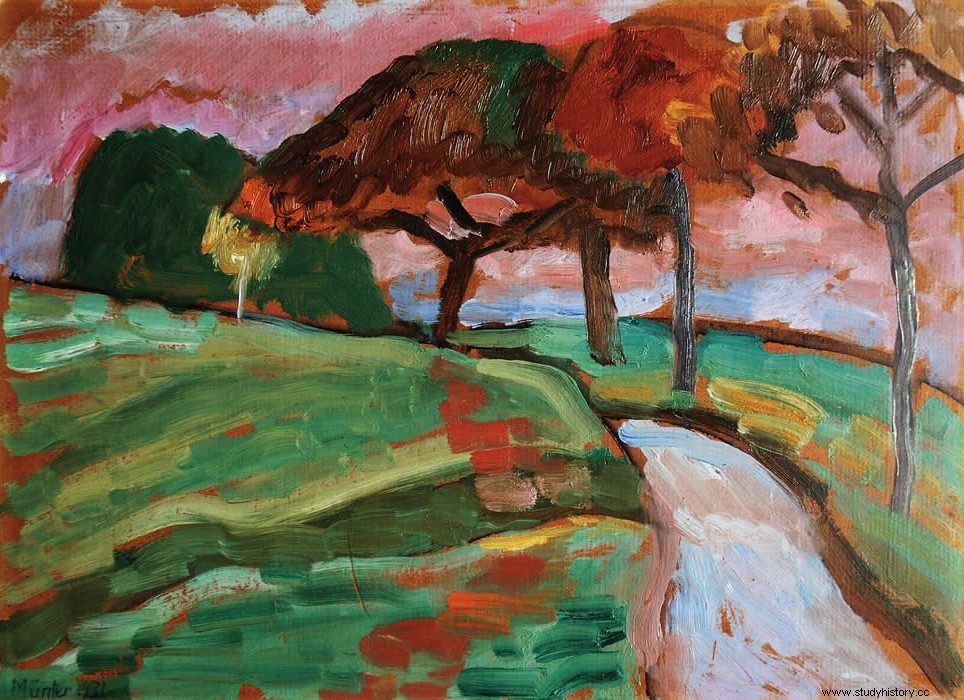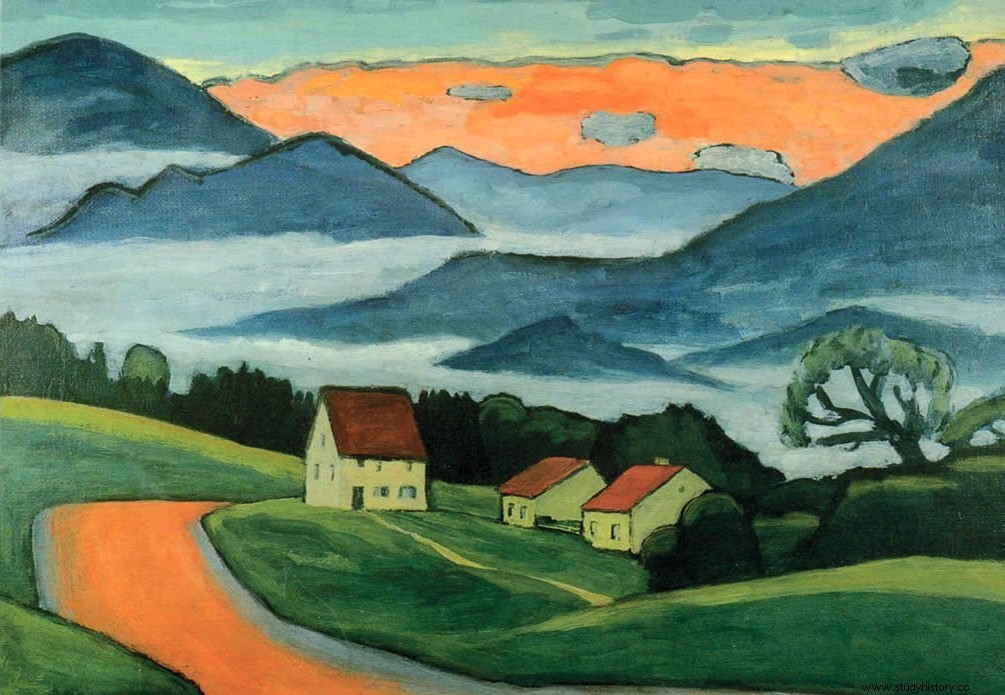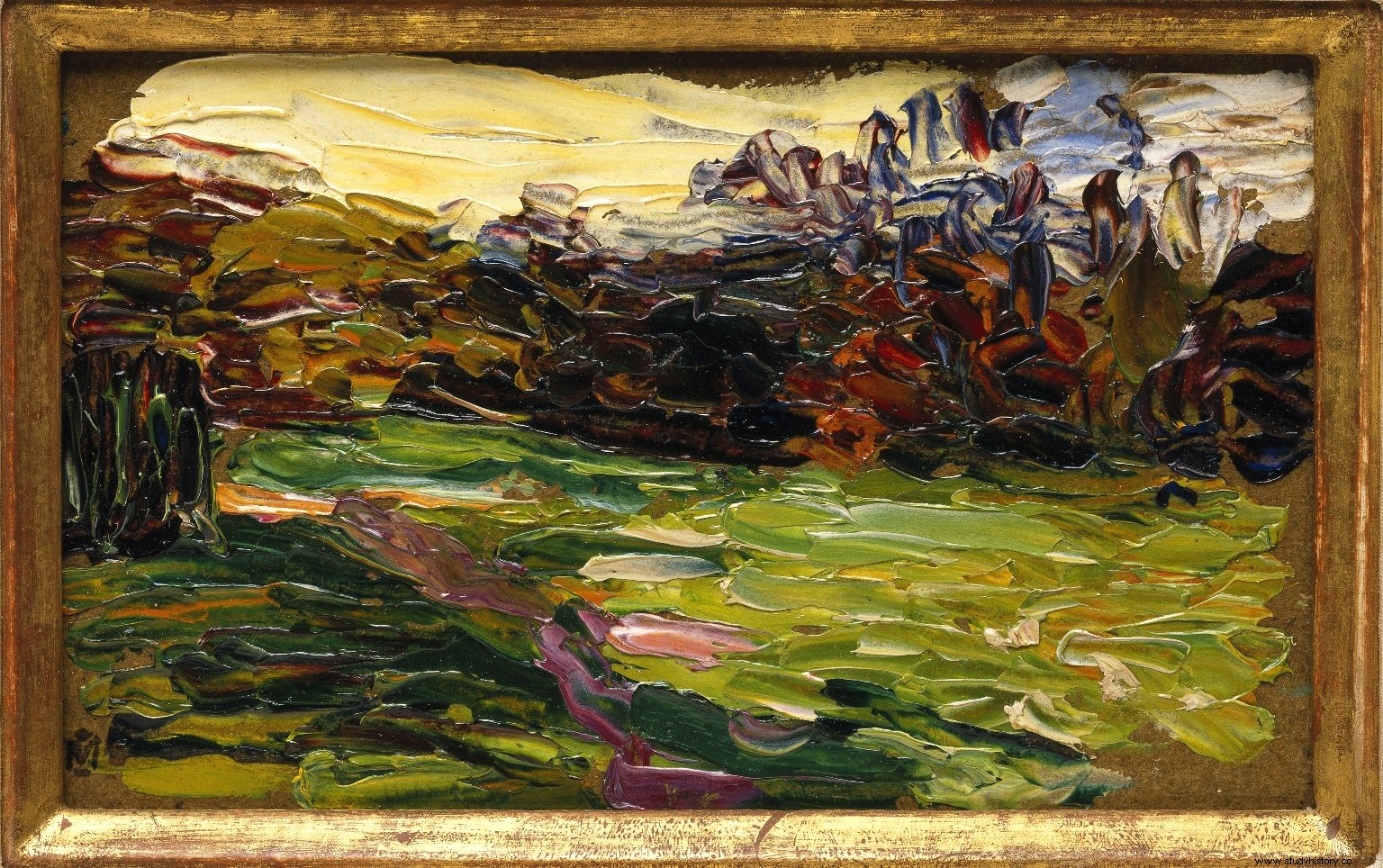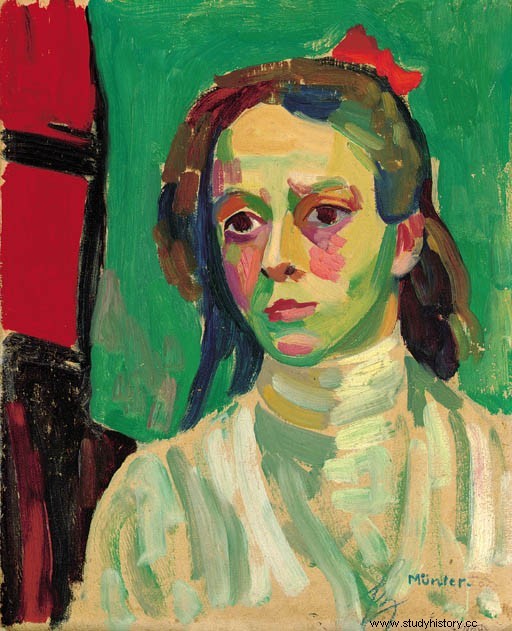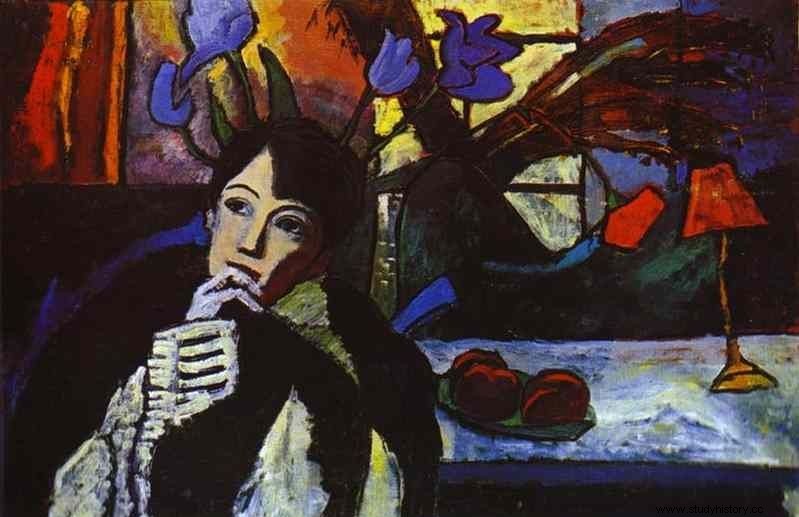Gabriele Münter (1877 – 1962) is a German expressionist painter, eminent member with among others Wassily Kandinsky of the group of artists Le Cavalier bleu.
The school of Vassily Kandinsky
Born in Berlin on February 19, 1877 into a bourgeois family, Gabriele quickly took an interest in art and drew from early childhood. She learned the piano, but it was the graphic arts that really attracted her and her parents supported her passion. Unable to join the Academy of Fine Arts because of her status as a woman, Gabriele first learned from a private tutor and then at the Düsseldorf Women's Art School. Disappointed by the education she receives there, she decides to change her place of education. Orphaned at 21, Gabriele inherits a large sum of money and takes the opportunity to travel to the United States, where she lives with her sister in complete independence and freedom for two years.
Back in Germany, she joined the Phalanx art school in Munich directed by Vassily Kandinsky. She learns painting, sculpture, engraving. Kandinsky spotted the talent of the young woman and, in the summer of 1902, invited her to follow his summer courses in Bavaria, in the Alps. Their romantic relationship begins during this stay. Gabriele still follows his teachings for a year, until the school closes. Although Vassily was married, they then publicly displayed their affair and settled down together.
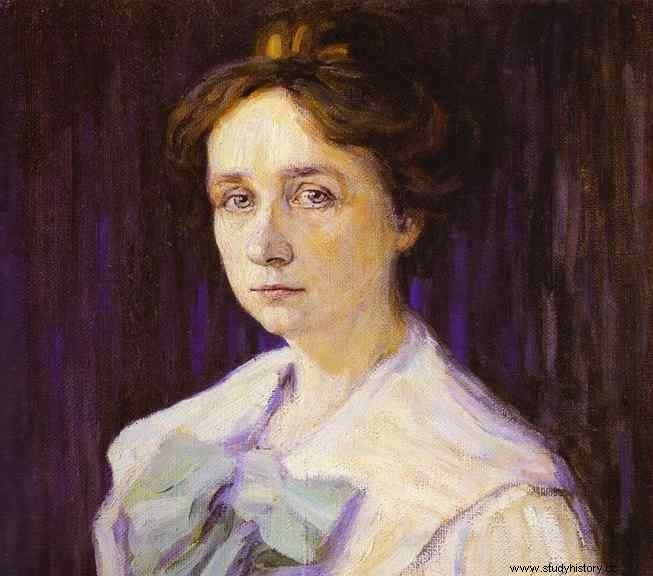
The Blue Rider
Vassily and Gabriele Münter undertook several trips to Europe together and forged friendly ties with many artists of the time; Gabriele keeps a diary of these trips and documents them with sketches and photos. In Paris, in 1906-1907, she discovered the works of Henri Matisse and the emerging movement of Fauvism, which would change her art. Also influenced by Gauguin, she sometimes painted with a knife and produced engravings, lithographs and paintings. She is particularly attached to the representation of landscapes in bright and expressive colors.
In 1909, Gabriele bought a house in the small Bavarian town of Murnau am Staffelsee where she spent her summers with her companion and received artists from the Munich avant-garde. With Vassily, she created the New Association of Munich Artists, a group of artists who broke with Impressionism. However, dissensions within the group caused it to quickly break up and, in 1911, Gabriele and Vassily left it to found the expressionist group Le Cavalier bleu, of which Paul Klee would also be a part.
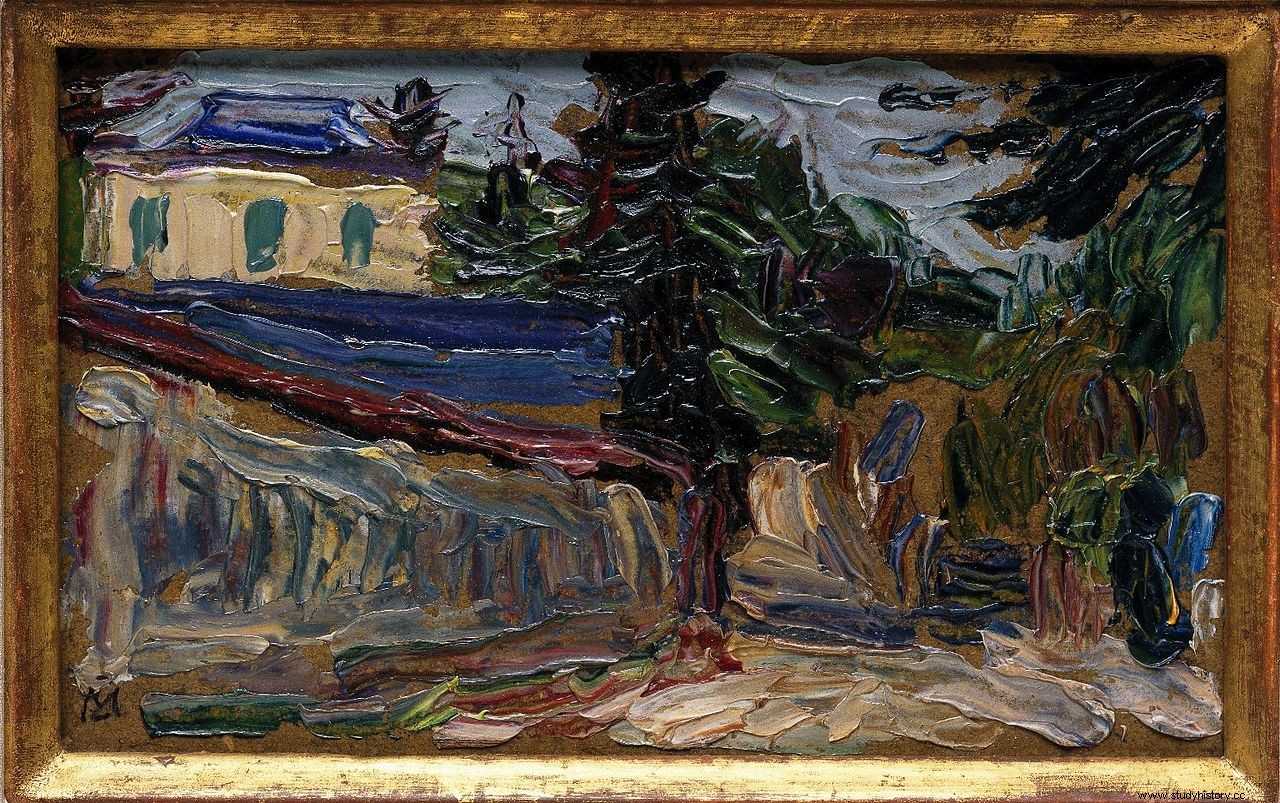
The two world wars
During the First World War, Vassily returned to live in Russia and Gabriele settled in Scandinavia for a few years. In 1917, their relationship ended definitively. For a few years, Gabriele Münter stopped painting. Suffering from chronic depression, she was forced to take time off from her art. In 1925, she moved to Berlin and resumed her pencils to sketch no longer landscapes but portraits of women. Her style evolved, and she really started painting again after a stay in Paris in 1929-1930 and then settling in Murnau with her new companion Johannes Eichner. Alongside her portraits of women, she also produces still lifes and abstract works.
During the Second World War, the works of Gabriele, like those of many other artists of the time, were described as degenerate art by the Nazis and banned from exhibition. Gabriele hides dozens of paintings and hundreds of drawings, members of the Blue Rider in particular, in his house in Murnau and manages to hide them in his basement despite the excavations. At the end of the war, she organized a retrospective of the works of the Blue Rider in Munich and her own works were widely presented in Germany. On his 80th birthday, in 1957, Gabriele donated his collection to the city of Munich.
Gabriele Münter died in his house in Murnau on May 19, 1962. The residence has since been transformed into a museum, housing works by Gabriele Münter and Vassily Kandinsky.

